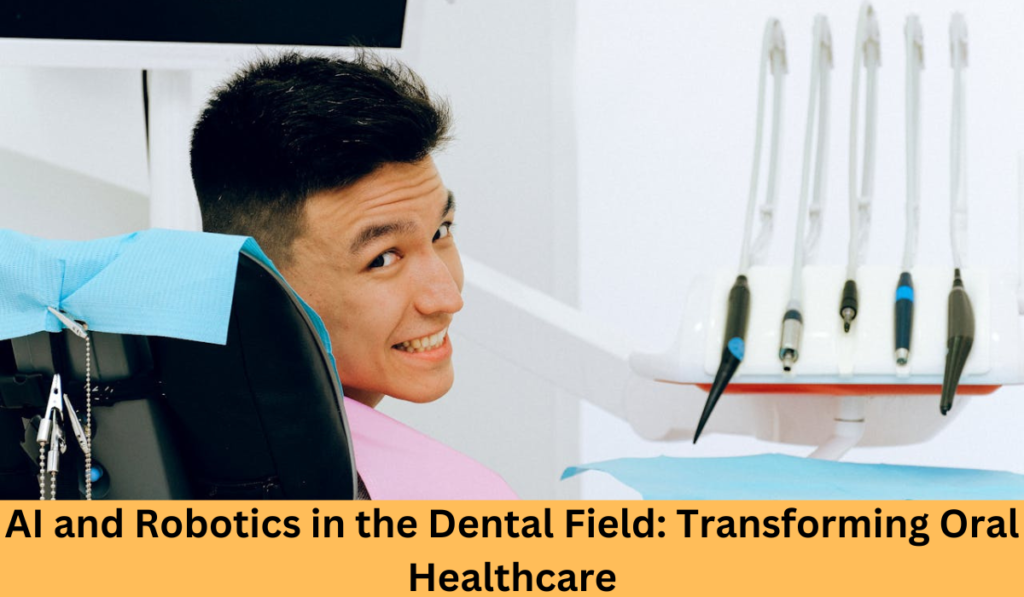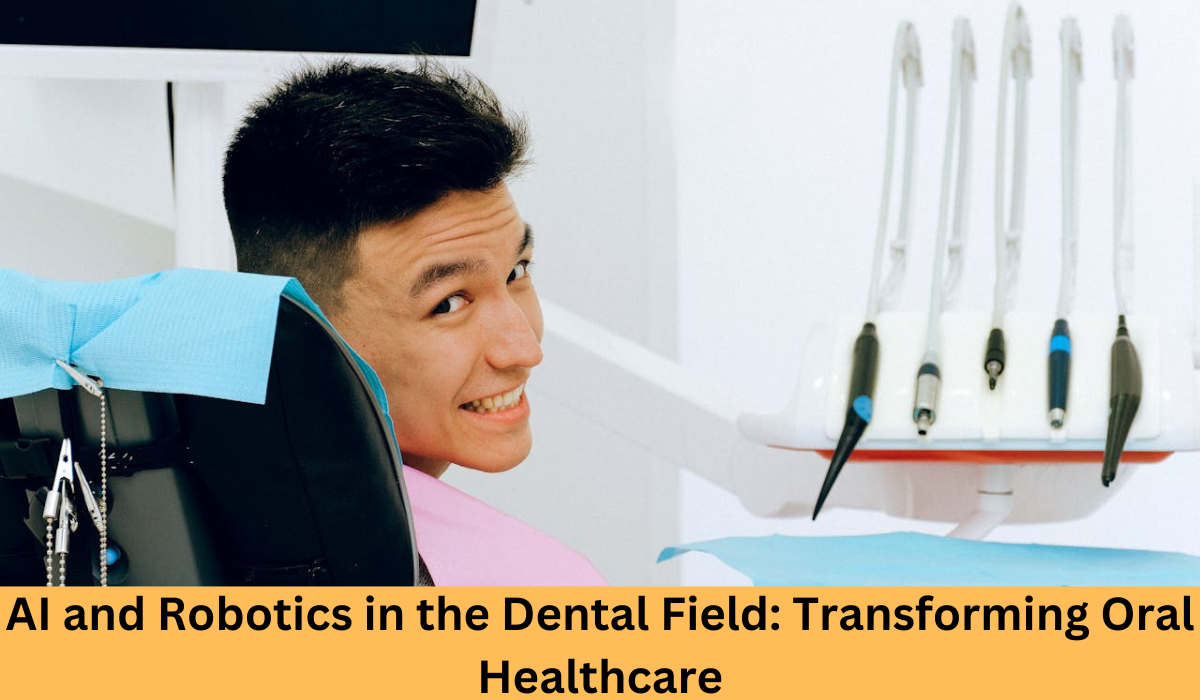In recent years, artificial intelligence (AI) and robotics have made significant strides in various sectors, including healthcare. Dentistry, a field traditionally reliant on manual techniques and human expertise, is undergoing a transformation due to these technological advancements. AI and robotics are revolutionizing how dental care is delivered, making procedures more efficient, accurate, and patient-friendly. This article explores the various ways AI and robotics are being utilized in dentistry, highlighting their impact on diagnosis, treatment, and overall patient care.

1. AI in Dental Diagnostics
One of the most promising applications of AI in dentistry is in the field of diagnostics. Traditionally, diagnosing dental issues such as cavities, gum disease, and oral cancers relied heavily on the expertise of the dentist, who would manually examine X-rays, scans, and other diagnostic tools. However, AI-powered diagnostic systems are now capable of analyzing these images with a level of accuracy that matches or even surpasses that of human professionals.
a. AI in Radiographic Analysis
AI algorithms can quickly analyze dental X-rays to detect anomalies that might be missed by the human eye. For instance, early-stage cavities, which might not be visible in a routine examination, can be identified using AI, allowing for earlier and more conservative treatment. These systems can also differentiate between different types of dental issues, providing a more accurate diagnosis and reducing the likelihood of misdiagnosis.
b. Predictive Analytics for Dental Health
AI is also being used to predict future dental issues based on a patient’s current oral health data. By analyzing patterns and trends in a patient’s dental history, AI can identify those who are at higher risk for conditions like periodontitis or tooth decay. This predictive capability enables dentists to develop personalized preventive strategies, improving patient outcomes.
2. Robotics in Dental Surgery
Robotics is playing a transformative role in dental surgery, enhancing precision, reducing recovery times, and minimizing patient discomfort. The integration of robotics in dental procedures has led to the development of sophisticated tools that assist dentists in performing complex surgeries with greater accuracy.
a. Robotic-Assisted Implantology
Dental implants, which involve the placement of artificial tooth roots into the jawbone, require precise positioning to ensure long-term success. Robotics can assist in this process by providing real-time feedback and guidance to the surgeon, ensuring that the implants are placed with millimeter precision. This reduces the risk of complications and improves the overall success rate of the procedure.
b. Minimally Invasive Surgery
Robotics also enables minimally invasive dental surgeries. Procedures that once required extensive cutting and suturing can now be performed with smaller incisions, leading to faster healing and less post-operative pain for patients. Robotic systems are equipped with advanced imaging technologies that provide a detailed view of the surgical site, allowing for more precise and less invasive interventions.
3. AI-Driven Patient Management
AI is not only revolutionizing clinical procedures but also transforming patient management in dental practices. From scheduling appointments to managing patient records, AI-driven systems streamline administrative tasks, allowing dental professionals to focus more on patient care.
a. Personalized Treatment Plans
AI can analyze a patient’s dental history, genetic factors, and lifestyle habits to create personalized treatment plans. For instance, if a patient is prone to gum disease, the AI system can suggest a tailored preventive care plan that includes specific at-home oral hygiene practices and regular professional cleanings. This level of personalization enhances the quality of care and improves patient satisfaction.
b. Virtual Dental Assistants
AI-powered virtual assistants are becoming increasingly common in dental practices. These systems can handle routine inquiries, remind patients of upcoming appointments, and even provide basic oral health advice. By automating these tasks, dental practices can operate more efficiently and provide better service to their patients.
4. The Future of AI and Robotics in Dentistry
As AI and robotics continue to evolve, their role in dentistry is expected to expand further. Future developments could include fully autonomous dental procedures, advanced AI-driven diagnostics that can detect even the most subtle dental issues, and robotic systems that can perform complex surgeries with minimal human intervention.
a. Autonomous Dental Procedures
Researchers are working on developing fully autonomous robotic systems that can perform simple dental procedures without human intervention. These robots would be equipped with AI algorithms that allow them to make decisions in real-time, ensuring that the procedure is carried out safely and effectively. While this technology is still in its early stages, it holds the potential to revolutionize dental care by making it more accessible and affordable.
b. Advanced AI Diagnostics
In the future, AI could be used to diagnose a wide range of dental issues from a simple scan of the mouth, without the need for multiple tests or examinations. These advanced diagnostics would not only be more accurate but also faster, allowing for earlier intervention and better outcomes for patients.
Conclusion
AI and robotics are transforming the field of dentistry, making it more precise, efficient, and patient-centered. From enhancing diagnostics to assisting in complex surgeries, these technologies are setting new standards in dental care. As they continue to evolve, the possibilities for their application in dentistry are endless, promising a future where dental care is more advanced, accessible, and effective than ever before.

